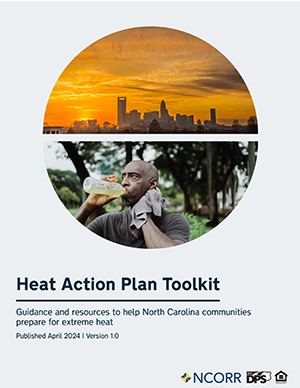Publications
Intersecting Risk: Heat and Substance Use in Rural Communities
Extreme heat directly impacts health and can exacerbate substance use. Rural communities face high risks due to those areas’ higher rates of heat-related hospitalizations and disproportionate effects of substance use. This commentary explores the connection between heat and substance use in rural communities and proposes policy, research, and practice recommendations that can be tailored to fit the local rural context.
Confronting Heat Challenges—Cross-Sector Strategies for National Resilience: A Report from the 2024 HeatWise Policy Partnership Summit
The HeatWise Policy Partnership Summit is a key component of a cyclical two-year program that encompasses stakeholder engagement, event planning, biannual convening, reporting key findings, and outreach to policymakers.
Wet Bulb Globe Temperature from Climate Model Outputs: A Method for Projecting Hourly Site-Specific Values and Trends
Increasing temperature will impact future outdoor worker safety but quantifying this impact to develop local adaptations is challenging. Wet bulb globe temperature (WBGT) is the preferred thermal index for regulating outdoor activities in occupational health, athletic, and military settings, but global circulation models have coarse spatiotemporal resolution and do not always provide outputs required to project the full diurnal range of WBGT. This article presents a novel method to project WBGT at local spatial and hourly temporal resolutions without many assumptions inherent in previous research.
North Carolina Heat Action Plan Toolkit
With climate change driving more frequent and intense heat events, North Carolina's Heat Action Plan Toolkit aims to help communities adapt and build resilience to extreme heat. Primarily targeted for use by local governments, including health and emergency management departments, the toolkit focuses on approaches to reduce the human health impacts of increasing temperatures and heat waves.
2023 Durham County Community Health Assessment
The 2023 Durham Community Health Assessment was produced as part of the accreditation process for the Durham County Department of Public Health and Affordable Care Act requirements for Duke Health. Nicholas Institute experts Ashley Ward and Jordan Clark contributed to a section on extreme heat, highlighting the disparate impact of extreme heat on Durham residents and current and future resources to mitigate the worst impacts of extreme heat exposure.
Higher Temperatures in Socially Vulnerable US Communities Increasingly Limit Safe Use of Electric Fans for Cooling
Use of electric fans can help people stay cool if they can remain hydrated and if temperatures are low enough. Yet, there are limits to how hot it can be to safely use a fan—when temperatures are too high, a fan will increase the amount of heat traveling over the skin. We use data based on historical meteorological observations to study the number of hours in the continental US that exceed recommended temperature thresholds for safe fan use. We also examine where climate conditions considered unsafe for fan use overlap with socially vulnerable communities.
Defining Extreme Heat as a Hazard: A Review of Current State Hazard Mitigation Plans
US states must have a FEMA-approved state hazard mitigation plan (SHMP) to apply for certain nonemergency disaster funds and funding for mitigation projects. SHMPs indentify the hazards that may impact a state and detail corresponding mitigation strategies. This report assesses the treatment and definition of heat as a hazard in each state's most recent plan. The importance of extreme heat—the leading cause of weather-related death in the United States—is often understated because it does not fit easily into current SHMP guidelines. The authors provide recommendations to help states adequately evaluate the threat of extreme heat as they update their SHMPs.
Technology Adoption at Public Agencies: Identifying Challenges and Building Opportunities to Modernize Public Water Data Infrastructure
Modernizing public agency water data depends not only on technology adoption, but also on transformation of how data are managed, shared, and used for decision-making. The Duke Internet of Water (IoW) Technology Adoption Program (TAP) addresses both. This report details efforts by IoW to identify challenges faced by public agencies and recommends a technology adoption roadmap based on nationwide surveys and interviews, best practices identified by public interest technologists, and the principles of modern data infrastructure, along with a case study on the New Mexico Water Data Initiative.
The Impact of Heat Exposure on Reduced Gestational Age in Pregnant Women in North Carolina, 2011–2015
Heat stress poses serious health risks to maternal health, including an increased probability of preterm labor and preterm birth. Yet the Southeastern US, where extreme heat exposure is high and maternal outcomes are some of the most challenging in the nation, has seen insufficient research and action on this issue. This study reveals significant impacts to pregnant women exposed to heat over a 5-year period during North Carolina’s annual warm season (May–September).









